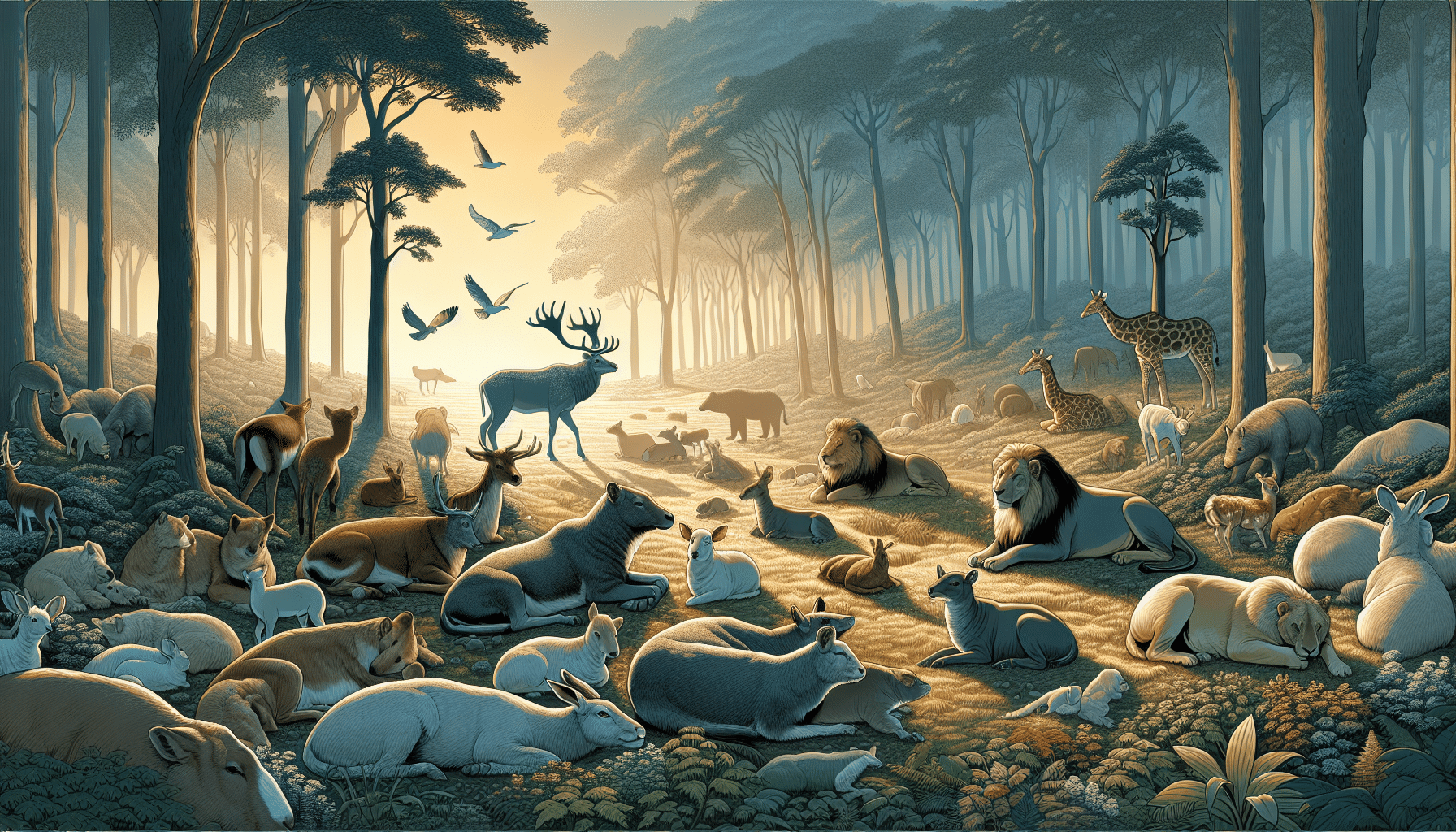Introduction to Insomnia and Group Sleeping in Animals
Group sleeping can significantly impact when animals sleep, how long they sleep, and the depth of their sleep. This phenomenon is observed across various species, each exhibiting unique sleep behaviors influenced by their social structures. For instance, meerkats adhere to “sleep traditions” that dictate their sleep schedules. Olive baboons, on the other hand, tend to sleep less as their group size increases. Bumblebees suppress sleep when in the presence of offspring, while co-sleeping mice can experience synchronized REM sleep. Understanding these patterns is crucial for comprehending both sleep and animal social structures, highlighting the importance of studying the social aspects of sleep.
Impact of Group Sleeping on Sleep Patterns
Group sleeping affects various aspects of sleep, including timing, duration, and depth. In meerkats, sleep schedules are influenced by established “sleep traditions,” which are passed down through generations. Olive baboons demonstrate a reduction in sleep duration as their group size increases, likely due to the heightened need for vigilance and social interactions. Bumblebees exhibit sleep suppression when caring for offspring, prioritizing the needs of their young over their own rest. Co-sleeping mice show synchronized REM sleep, indicating a level of sleep coordination within the group. These examples underscore the complex interplay between social structures and sleep patterns in animals.
Importance of Studying Social Sleep
To fully understand sleep and animal social structures, it is essential to consider the social aspects of sleep. Traditional sleep studies often focus on individual animals in controlled laboratory settings, which fail to capture the environmental and social contexts in which sleep naturally occurs. By studying social sleep, researchers can gain insights into the ecological and evolutionary implications of sleep behaviors. This approach can reveal how sleep influences group dynamics, decision-making, and cooperation, providing a more comprehensive understanding of animal behavior.
Limitations of Current Sleep Studies and Insomnia Research
Despite the importance of social sleep, most current sleep studies are conducted under laboratory conditions that only consider individual animals. These studies provide detailed information on sleep phases and depth but lack the context of natural environments and social interactions. This limitation hinders our understanding of how sleep functions in real-world settings and its impact on social structures.
Laboratory Conditions vs. Natural Environments
Laboratory sleep studies typically focus on individual animals in controlled environments, offering high-resolution data on sleep phases and depth. However, these studies fail to account for the environmental and social contexts that influence natural sleep behaviors. In the wild, animals face various challenges and interactions that can significantly impact their sleep patterns. By studying animals in their natural habitats, researchers can better understand the complexities of sleep and its role in social structures.
Need for Wild Sleep Studies
To address the limitations of laboratory studies, researchers advocate for studying groups of sleeping animals in their natural environments. This approach allows for the observation of sleep behaviors within the context of social interactions and environmental challenges. By leveraging technologies such as wearable or implantable accelerometers, researchers can monitor animal movements and sleep patterns in the wild. Combining this data with social network analyses can provide valuable insights into the ecological and evolutionary impact of sleep on fitness and survival. This comprehensive approach can help unravel the adaptive functions and evolutionary trade-offs of sleep that are not apparent in individual-focused studies.
Proposed Framework for Studying Social Sleep and Insomnia
To bridge the gap between laboratory and natural environment studies, researchers have proposed a comprehensive framework for studying social sleep and insomnia in animals. This framework leverages technological advancements and social network analyses to provide a holistic understanding of sleep within social contexts.
Technological Advancements
Modern technology has opened new avenues for studying sleep in the wild. Wearable or implantable accelerometers can monitor animal movements and sleep patterns with high precision. These devices can be paired with video or direct observations to provide a richer context for the data collected. For example, accelerometers can track the sleep-wake cycles of animals in their natural habitats, while video footage can capture interactions and environmental factors influencing sleep.
By integrating these technologies, researchers can gather detailed information on how animals sleep in their natural environments. This data can reveal how factors like predation risk, resource availability, and social interactions impact sleep patterns. Such insights are crucial for understanding the adaptive functions of sleep and its role in animal behavior and survival.
Social Network Analyses
To fully understand the social aspects of sleep, it is essential to pair sleep data with social network analyses. This involves measuring social structures such as dominance hierarchies, kinship relationships, and group cohesion. By analyzing how these social factors influence sleep, researchers can gain insights into the ecological and evolutionary impact of sleep on fitness and survival.
For instance, in a group of meerkats, researchers might examine how the sleep patterns of dominant individuals differ from those of subordinates. Similarly, in a colony of bumblebees, they could investigate how the presence of offspring affects the sleep of caregivers. By combining sleep data with social network measurements, researchers can uncover the complex interplay between sleep and social structures.
Implications for Insomnia and Group Behavior
Understanding the social side of sleep has significant implications for both insomnia research and our understanding of group behavior in animals. By studying how sleep patterns influence group dynamics, researchers can uncover the adaptive functions and evolutionary trade-offs of sleep.
Influence on Group Dynamics
Sleep patterns can have a profound impact on key aspects of group behavior, such as coordination, decision-making, and cooperation. For example, synchronized sleep in co-sleeping mice may enhance group cohesion and cooperation. In contrast, sleep deprivation in olive baboons due to larger group sizes may affect their ability to coordinate and make decisions effectively.
By studying these dynamics, researchers can gain insights into how sleep influences the overall functioning of animal groups. This knowledge can inform conservation efforts and improve our understanding of the ecological roles of different species.
Adaptive Functions and Evolutionary Trade-offs
Collecting data on sleep and sociality can reveal the adaptive functions and evolutionary trade-offs of sleep. For example, the sleep suppression observed in bumblebees caring for offspring may be an adaptive response to ensure the survival of the young. Similarly, the “sleep traditions” in meerkats may have evolved to optimize group safety and resource allocation.
Understanding these trade-offs can provide valuable insights into the evolution of sleep and its role in animal behavior. It can also inform our understanding of insomnia and other sleep disorders in humans. By studying the social aspects of sleep in animals, researchers can uncover new strategies for managing sleep disorders and improving overall well-being.
For more interesting articles on sleep disorders, check out our Sleep Disorder Blog. And if you’re looking for a way to relax and improve your sleep, try our Sleep Sound Playlists.
In conclusion, studying the social side of sleep in animals offers a wealth of insights into the ecological and evolutionary implications of sleep. By leveraging technological advancements and social network analyses, researchers can uncover the complex interplay between sleep and social structures, providing a more comprehensive understanding of animal behavior and the adaptive functions of sleep.
Source: https://www.sciencedaily.com/releases/2024/09/240905120854.htm



